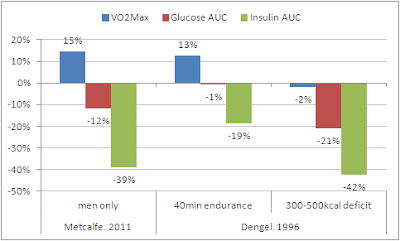Reduced Exertion High Intensity Training - A Minimalist 2x20s HIIT Protocol For The Male Convenience Generation.
 |
| Image 1: Looks like humans are not the only lazy creatures, in these days of unhealthy convenience. |
"Convenience" is the buzzword of the modern western civilization and the obesity epidemic is its unwanted consequence.
A consequence, which is yet by no means inevitable. After all, we all know that getting our behinds off our couches and into the gym, and setting the dietary recommendations of the (fast-)food industry, ahh... pardon, the government at naught would solve the problem, if ... yeah, if there was not this aforementioned genetically programmed laziness that makes the couch so much more appealing to us than the hard benches in the gym...
Sacrifice 30min per week of your TV-time and live to see your grandchildren graduate
A recent study from scientists from the United Kingdom does yet show that you could still spend more than enough time in front of your beloved television set, if you just performed what what Richard S. Metcalfe and his colleagues from the United Kingdom call the "minimal amount of exercise for improving metabolic health" (Metcalfe. 2011) - a 3x per week 10min exercise regimen with no more than two (yes, only 2x!) all-out sprints.
 |
| Figure 1: Outline of the training protocol, the black bars indicate all-out sprints at a breaking force equivalent to 7.5% of the individuals body weight (directly adapted from Metcalfe. 2011. Fig. 1) |
 |
| Image 2: "Cardio" does not have to be steady state. |
 |
| Figure 2: Changes in VO2Max, glucose and insulin area under the cure in response to oral glucose tolerance test in men and women after 6 week of "reduced exertion high intensity training" (data calculated based on Metcalfe. 2011) |
(RE)HIIT only for men?
As far as the underlying reasons for these gender differences are concerned, the scientists are pretty much at a loss, stating that this could be due to "the low statistical power of our study, with only eight female subjects performing the REHIT", " differences in metabolic perturbations during the brief high-intensity cycle sprints", and the 3-day delay after the last HIIT session before the glucose tolerance test was done (as a SuppVersity reader you will be familiar with the notion that the "anabolic barn door" is wide open for 24-48h), so that "insulin sensitivity was improved in female subjects at an earlier time-point". Now, I do not want to sound like a himbo, but I would say that another observation the scientists made, provides a much better explanation:
[...] we observed that some of the female volunteers struggled with the transition from 60 W to the all-out sprints, and were unable to substantially increase their pedal frequency, and thus their power output during the sprints. This may have increased the aerobic contribution to energy supply and reduced glycogen depletion.In other words, what was supposed to be a sprint turned out to be a sluggish ordeal. The slightly, but statistically significantly higher rates of perceived exertion (+10%) in the female study participants corroborates the assumption that the women simply did not burn enough glycogen. If we do now also consider the results of a 2008 study by Hagobia et al. who report that
[...] in women, exercise altered energy-regulating hormones in a direction expected to stimulate energy intake, regardless of energy status. In men, the response to exercise was abolished when energy balance was maintained.It appears obvious that an increase in pedaling frequency by adapting the resistance to the individual fitness levels and dietary controls may be necessary to render this minimalist "REHIT" protocol productive for the fairer sex.
 |
| Figure 2: Comparison of changes in VO2Max, glucose and insulin area under the cure in response to oral glucose tolerance test subsequent to 6 weeks of REHIT, or 10 months of "classic cardio" exercise, or dietary intervention (data calculated based on Metcalfe. 2011 and Dengel. 1996) |
Note: Unfortunately, Metcalfe et al. did not measure the body composition of the study participants. In view of the results of the Whyte study (Whyte. 2010), I cited in the Intermittent Thoughts on Healthy Weight Loss, where the participants lost -2.4cm of their allegedly obese bellies within no more than 2 weeks of doing HIIT, as well as the well-established correlation between insulin resistance and the size of your beer-belly, it is very well possible that the male participants in the Metcalfe study will have lost some body fat doing no more than 8.67 minutes of all out cycling spread across 18 training sessions in 6 weeks... and if they didn't their diet probably was still too convenient ;-)
The (in-)convenient truth about your future
Taken together the results of these studies suggest that a) steady state aerobic exercise is pretty pointless, b) even a minimalist HIIT regimen goes a long way, as long as c) you really hit it hard and d) adhere to your regular (hopefully non-convenient) diet, or even better e) introduce a slight calorie deficit. In other words, without at least some "inconveniences" as far as nutrition and exercise are concerned, chances are that YOU will either remain or become one of the 34,004,946 obese human beings that are now populating a planet where the US alone spend 1,550,566$ per day on the detrimental health consequences of the"convenience" of its citizens (data from Obesity Statistics).


